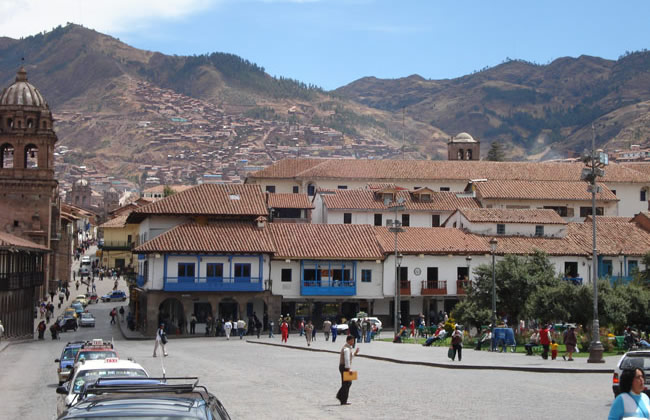Risk Reduction in Andean Capital Cities: A horizontal regional cooperation effort
Over the last year, the project titled “Risk Reduction in Andean Capital Cities” has contributed to create and strengthen synergies among municipal governments in the five Andean capital cities on the issue of risk reduction. During this process, the cities of Bogota, Caracas, La Paz, Lima, and Quito have analyzed their progress toward developing instruments for risk reduction, and have made them available to their peers in the region with the purpose of exchanging experiences and promoting mechanisms for horizontal cooperation. To ensure the sustainability of these initiatives, political authorities signed a regional agreement by which they committed to integrate risk reduction into their municipal development planning and maintain this regional interaction. The initiative responds to the priorities identified in the Hyogo Framework for Action, particularly in terms of ensuring that disaster risk reduction becomes a national and a local priority with a strong institutional basis for implementation.

Photo: J. J. Trelles
In the last few decades, the Andean cities have suffered an accelerated and disorderly process of expansion and population growth. As a result of inadequate social and economic policy, the rural population has been forced to migrate and look for jobs in urban areas, particularly in capital cities. In a few short years, cities such as Caracas, Lima, and Bogota have become metropolises with more than five million inhabitants, where most services, trade centers and industries are concentrated, coexisting with the extreme poverty of marginal neighborhoods. In many cases, the conditions of exclusion that made migration necessary in the first place have now been replicated in the cities. The immigrant population, with its scarce resources, settles mainly on steeply sloped hillsides, river banks, and flood-prone plains, with inadequate housing, infrastructure and services, all of which lead to highly vulnerable human settlements.
The continuous occurrence of disasters and the increased intensity of the impact of floods, landslides, epidemics, and other frequent events, have awakened the concerns of municipal authorities. Thus, city governments have developed a number of instruments to strengthen the population’s and institutions’ capacity for response (awareness raising campaigns, civic education, emergency committees, etc.), prevention and mitigation (hydraulic public works, improved housing, resettlements, etc), and measures to avoid the emergence of new risks (land use planning, development plans, etc).
Instruments for municipal risk management
Each city has placed greater emphasis on one or more of these aspects of risk management, building upon the capacities within local governments and among the Andean capital cities. A total of 83 instruments have been identified during the implementation of the project, some of which are:
• Development and territorial management: The inclusion of risk considerations in Bogota’s land-use planning processes; strategies to control illegal occupation (squatting) in Quito; the incorporation of risk reduction as a cross-cutting issue in La Paz’s development plan; and Bogota’s district system for emergency prevention and response.
• Information: Bogota’s and La Paz’s risk and emergency information system; methodologies to analyze hazards, vulnerabilities, and risks in Quito, La Paz, and Bogota; indicators for municipal risk management in Caracas.
• Mitigation of Existing Risks: The incorporation of strategies for risk reduction in neighborhood improvement programs in La Paz and Bogota; resettlement and housing improvement programs in Bogota; preventative public works to control hillside slopes and river bank erosion.
• Preparedness: Methodologies related to education and awareness raising in Bogota and La Paz; methodologies to assess disaster situations in Bogota and La Paz; inter-institutional organization in Bogota; strategies for community organization and emergency shelter management in Quito.
Practical workshops and mechanisms for horizontal cooperation:
One of the key aspects of this project were the workshops for promoting exchanges among the cities, in which each of these capital cities presented its progress in this issue to its peers from the region. These activities helped motivate the technical teams, since the workshops promoted a critical analysis within the municipal governments and reaffirmed their efforts. The workshops also permitted participants to reflect on the processes that create risk and on the main bottlenecks to risk reduction.
A series of mechanisms for horizontal cooperation were identified as a result of this exchange. A total of 63 proposals requesting common technical assistance reveal the interests and priorities of the city governments. These can be summarized in the following four action areas (see table).
Regional political agreements
To ensure the sustainability of this process, the definition of general policy orientations was made a priority from the very beginning. This allowed political authorities to make specific commitments. A series of guiding principles and criteria were established for incorporating risk management into the municipal sphere, and a number of policy guidelines were proposed. These are geared toward the inclusion of risk reduction in municipal governance in ways that are comprehensive, multi-sectoral, and linked to the reality of the region. Emphasis was also placed on the involvement of communities and institutions in order to establish joint responsibilities for risk management.
For further information, please contact Angeles Arenas (angeles.arenas@undp.org), Disaster Reduction Regional Advisor, UNDP/BCPR-LAC; Rocío Chain (rocio.chain@pnud.bo), UNDP/Bolivia; or Luis Gamarra (luis.gamarra@pnud.bo), Project Coordinator.
Website: www.reddesastres.org
1Information on these and other experiences has been compiled, analyzed and disseminated through the publication of a Catalog of Instruments for Risk Reduction and Disaster Preparedness. This information can also be found by visiting our online platform: www.reddesastres.org
|

